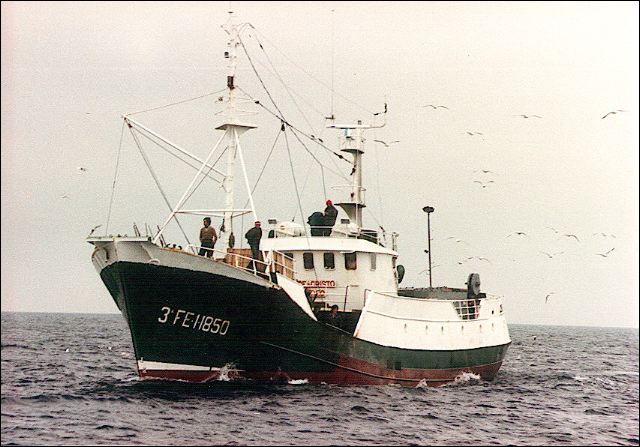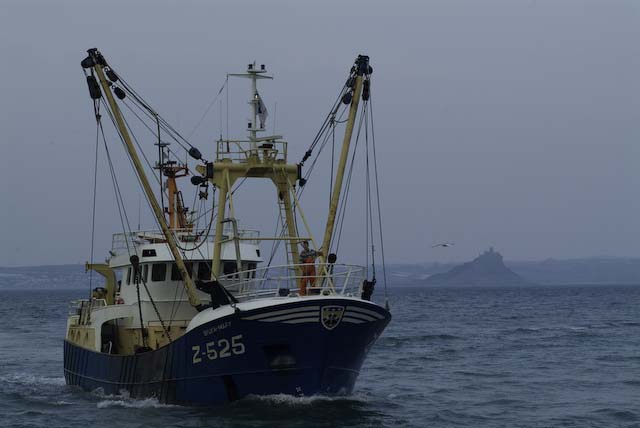Welcome to Through the Gaps, the UK fishing industry's most comprehensive information and image resource. Newlyn is England's largest fish market and where over 50 species are regularly landed from handline, trawl, net, ring net and pot vessels including #MSC Certified #Hake, #Cornish Sardine, handlined bass, pollack and mackerel. Art work, graphics and digital fishing industry images available from stock or on commission.
Tuesday 11 October 2016
Fish Landings from the UK EEZ
European Union fishing boats caught more than half of the fish landed from the United Kingdom’s Exclusive Economic Zone in recent years, and seven times more than UK boats caught elsewhere in EU waters.
Those are among the main findings of a detailed analysis of fisheries data contained in a report published today by the NAFC Marine Centre UHI in Shetland.
The analysis, carried out by NAFC's Senior Policy Advisor, Dr Ian R. Napier, estimated that from 2012 to 2014 fishing boats from other EU countries caught 58% of the fish and shellfish landed from the United Kingdom’s Exclusive Economic Zone (EEZ) each year, on average. That is some 650,000 tonnes of fish and shellfish, worth more than £400 million, each year. In contrast, UK fishing boats landed 90,000 tonnes of fish and shellfish, worth about £100 million, caught elsewhere in EU waters each year, on average.
The Exclusive Economic Zone is a sea area defined in International Law that extends up to 200 nautical miles (371 km) from the coast, within which a country is entitled to control the exploitation of fish and shellfish, as well as other economic resources.
The analysis used publically available data published by the European Commission and the UK's Marine Management Organisation (MMO). Among other findings were:
More than half of the megrim, plaice and saithe, three-quarters of the common (Dover) sole, hake, herring and skates and rays, 83% of the horse mackerel and 94% of the blue whiting landed from the United Kingdom’s EEZ by European Union fishing boats were caught by non-UK boats.
More than half (51%) of the fish and shellfish landed from the Scottish part of the UK EEZ was caught by non-UK boats.
Almost three-quarters (71%) of the fish and shellfish landed from the English, Welsh and Northern Irish part of the UK EEZ was caught by non-UK boats.
The full report is available for download here
Monday 10 October 2016
Magical Monday morning light.
All set for a magical start to the day in Mount's Bay...
with a selection of beam trawl, inshore trawl, handline and net boats landing to the market this morning...
including the Helford based netter, New Harmony...
the William Samson Stevenson put a huge trip of plaice ashore...
which should keep Gary busy for an hour or to...
while the Twilight went to the deeper water and picked up a solid trip of megs...
with only a handful of boxes of plaice - highliting the difference in fishing grounds for different species...
both boats landing a few lemons...
while the Shiralee had a good weekend on the Dorys...
others hit the shiny silver types like bass...
and black bream...
or even a few red mullet...
or ever-present red gurnard...
a handful of cuttles gave themselves up for the Shiralee while...
the bigger beam trawler took a bigger hit on different grounds indicating that the cuttle season is now started...
with the tides more favourable the netters, like the Britannia V have been in action well west of the Scillys...
along with the Ajax...
maybe a sign of squid moving in on the shore from the punts...
as ever, there's hake keeping an eye on proceedings...
while out in the harbour first light falls on what little of the fleet is in...
as just enough light falls on the still waters of the bay...
as the first of the punts make their way...
out through the gaps...
to start their day's work...
on an almost flat calm morning...
where even the swan family get in on the act...
at the start of what promises to be a cracking day...
for the far south west...
a reminder of who built what and when on the promenade facia.
Sunday 9 October 2016
Fresh Thinking on Fishing by Chris Williams - a Tedx event.
Globally the trend is towards fewer, larger fishing boats, and a concentration of fishing rights in fewer hands, making it hard for smaller fishing operations to compete. There are often trade-offs between the social, environmental and economic value of fishing. A new fresh approach to fishing is needed, so that the industry brings the biggest benefit to our society.
Chris Williams is passionate about our oceans, after falling in love with scuba diving on a family holiday. He has worked all over the world undertaking biological surveys and working with local fishermen on conservation and development projects.
Chris has worked at the New Economics Foundation (NEF) since 2011, specialising in fisheries. He holds a Bachelor’s degree in Biology and North American History and Politics from Sussex University and a Masters degree in Environment and Development (with Spanish) from Kings College London.
Chris Williams is passionate about our oceans, after falling in love with scuba diving on a family holiday. He has worked all over the world undertaking biological surveys and working with local fishermen on conservation and development projects.
This talk was given at a TEDx event using the TED conference format but independently organized by a local community.
Learn more at http://ted.com/tedx
Chris has worked at the New Economics Foundation (NEF) since 2011, specialising in fisheries. He holds a Bachelor’s degree in Biology and North American History and Politics from Sussex University and a Masters degree in Environment and Development (with Spanish) from Kings College London.
Saturday 8 October 2016
'Homemade' @NewlynArtsFest by Callum Mitchell
'Homemade', curated by Callum Mitchell
Homemade is an exhibition of film, photography and live performance focussing on themes of identity, memory and place on now at the Newlyn Art Gallery.
James Green welcomed all those attending the @NewlyArtsFest opening event alongside Callum Mitchell, curator of the show...
who put together a very personal collection of work...
from friends like Sarah Woods...
and collaborative piece with Joe Gray which included a 'pound board' (not that anyone but a fisherman would recognise it for what it is/was!)...
and an accompanying soundscape by Rick Williams...
growing up in Newlyn...
means that evidence of the fishing industry can be seen in almost every piece of work...
in the galleries...
some names...
and faces...
who formed Callum's Homemade landscape...
including the internal installation...
of household objects...
Mark Jenkins A Field in Paul Where the Sun Goes to Bed Every Night provides an opportunity for a contemplative moment in the Lower Gallery space...
while Dion Star's, Marine Debris Typeface...
is explained...
in a series...
of iPad slides...
along with an animated sequence showing...
how the final typeface was created...
from 2046 individual pieces of plastic flotsam collected from Wherrytown beach.
Great show and a fitting start to @NewlynArtsFest
Subscribe to:
Posts (Atom)





















































